On this page, explore a selection of highlights from LUAG's permanent collection of over 20,000 works of art spanning many cultures and eras. For an advanced search, use the JSTOR link at the bottom of the page.

On this page, explore a selection of highlights from LUAG's permanent collection of over 20,000 works of art spanning many cultures and eras. For an advanced search, use the JSTOR link at the bottom of the page.

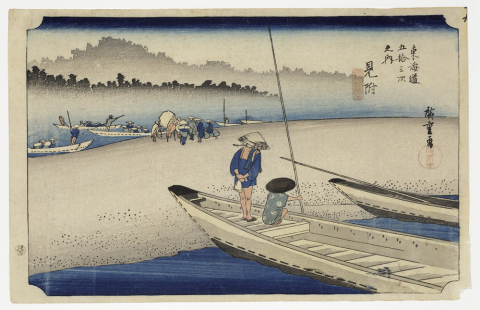

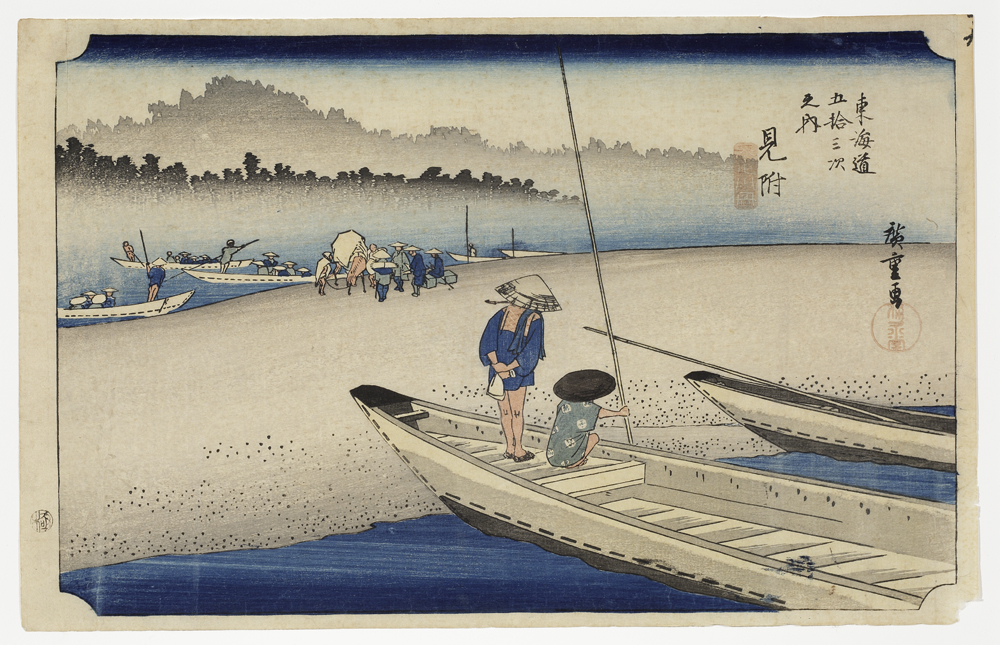
Utagawa Hiroshige was a Japanese artist who was born in Edo, Japan in 1797. He is known to be the last Ukiyo-e artist. Ukiyo-e was a form of art that depicted subjects during their everyday life. Some of these pieces of art focused on women, but Hiroshige’s often emphasized the landscape of Japan and the people’s interaction with it. His work is also important because it marks a time when print culture in Japan was increasing and artwork was being mass produced. His unique vantage points and bright colors made his prints popular in this culture.
Many of his designs were based on the landscapes and people he saw on his 300 mile travel through Japan. In his lifetime he produced over 8,000 works. 5,000 of those designs were of landscapes.
After learning the practice of Ukiyo-e art, Hiroshige became a teacher himself. He had multiple that learned the art of Ukiyo-e but none of them gained the same level of success as their teacher. Hiroshige died in 1858 at the age of 61.
About the artwork:
Tokaido Road, Station No. 29 is just one in a number of prints made by master printmaker Utagawa Hiroshige. Hiroshige was a master of the ukiyo-e style of printing in 18th and 19th century Japan. Ukiyo-e, or “pictures of the floating world,” consisted of many themes: these included travel, flora and fauna, as well as erotica.
Prints of the ukiyo-e style were created by teams of artisans, consisting of artists, woodcarvers, printers and publishers. An ink drawing provided by the artist would be attached to cherry wood blocks, and then rubbed with oil to provide a guide for the carvers, who would cut away the areas untouched by ink to create a negative image. The block was then used to transfer ink onto handmade paper, and the finished prints would be distributed by publishers. Originally the work of ukiyo-e artists was monochromatic, but as the techniques were improved, layering could be done to create multiple colors in a work.
Hiroshige’s Tokaido Road Station No. 29 is an example of a late print. It features landscape and travel, common themes of the ukiyo-e style. Furthermore, the striations created in the water giving the impression of movement and the subtle shift from dark to light in the background trees indicate the technical superiority of Hiroshige’s work. It is this technical mastery, as well as commercial appeal, that made his prints masterworks.
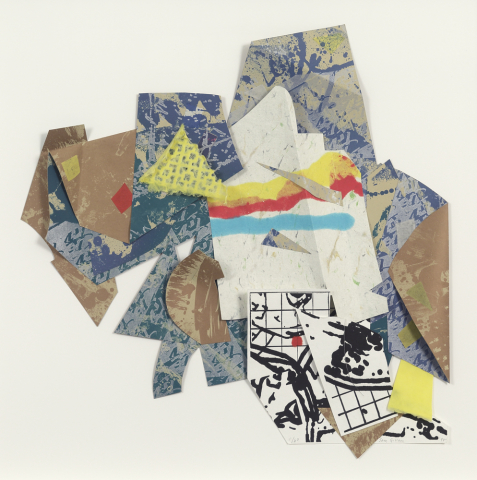

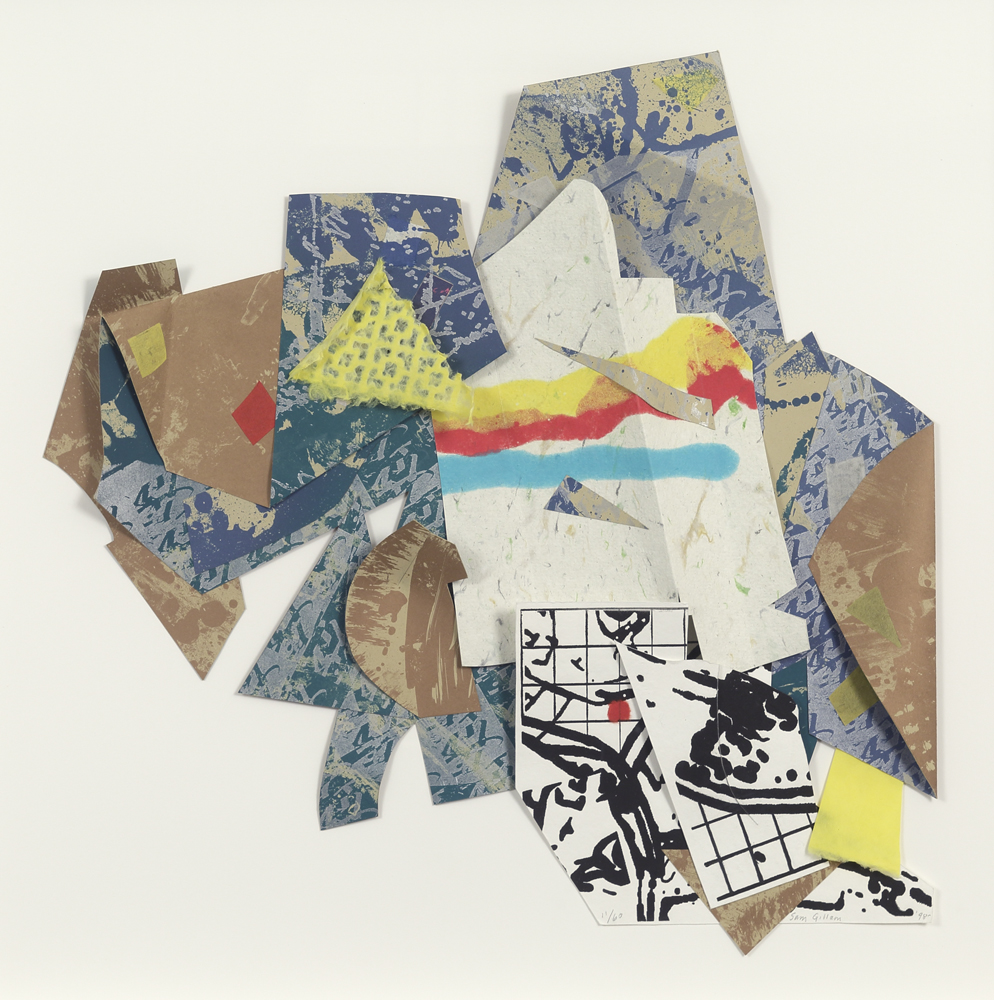
Sam Gilliam is an African american artist who was born in Tupelo, Mississippi in 1933. He was the seventh of eight children. His family moved to Louisville, Kentucky shortly after he was born and that is where he spent his childhood. As a child he enjoyed drawing and painting. He even wanted to be a cartoonist while he was growing up. He attended the University of Louisville and received his Bachelor of arts degree in fine arts. After graduating he served in the army from 1956 to 1958. He then went back to school and studied under Charles Crodel. He eventually received his Master of Arts degree in painting.
Gilliam used his talents as a teacher in Washington’s public schools, Maryland Institute, College of Art and the University of Maryland, and The Carnegie Mellon University in Pittsburgh. While he did teach full time he also continued to paint. His style changed throughout the years but he is generally considered an abstract painter. He was the first painter to work with unsupported canvases which is what makes him such an important artist. This means that he did not use a frame to stretch his work, but instead hung the canvas from the ceiling or wall. He is also known for using geometric patterns in many of his works.
Today Gilliam still lives in Washington D.C. He is still making and exhibiting his artwork there.
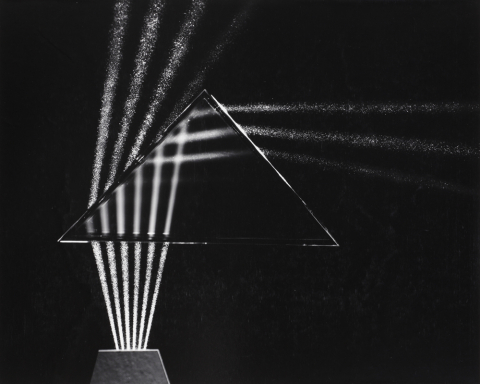

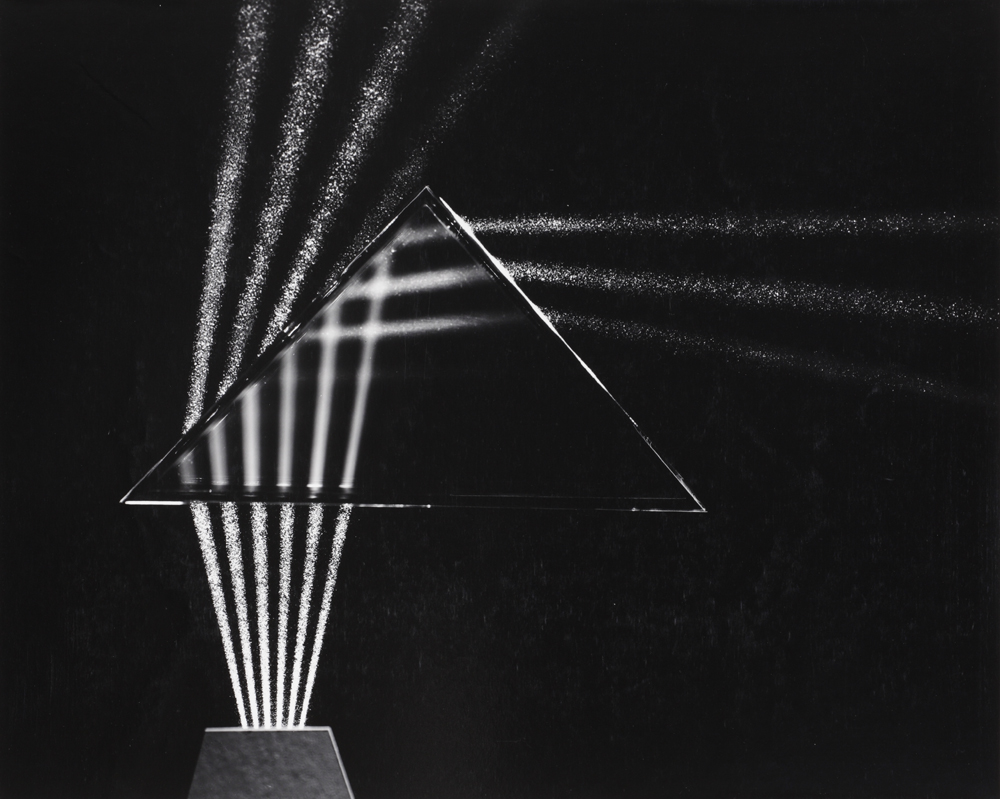
In 1956, during the height of the Cold War, scientists were intent on creating a new educational curriculum that would clearly and vividly illustrate principles of physics, making the subject more appealing to students. While best known for her earlier work documenting New York City architecture, Berenice Abbott was hired by the Massachusetts Institute of Technology to help create a series of compelling photographs to be used in high school science textbooks across the country.
Abbott spent several years in the late 1950s working at MIT, along with the renowned engineer and photographer Harold Edgerton. During this time, she constructed and photographed physical representations of many scientific phenomena, including gravity, electromagnetism, and waves.
In this photograph, Abbott demonstrates properties of the refraction of light by shining beams of light through a piece of triangular glass. In the process, she has also created an interesting and dynamic composition, wherein the viewer’s eye follows the angles created by the central triangle and the lines of refracted light. Abbott’s elegant and precise work at MIT aptly demonstrates her prowess as a documentary photographer, capturing the intersection between art and science in order to inspire and spur future generations of scientists.
Berenice Abbott
American, 1898-1991
Berenice Abbott was a photographer who was born in Springfield, OH in 1898. She moved to New York City in 1918 so that she could study sculpture and drawing. Instead of attending a school to study sculpture she studied independently and made connections with well known artists through her own work. She then moved to Paris to study sculpture in 1921. From 1923 to 1935 Abbott worked as a darkroom assistant to the American Dada and Surrealist artist Man Ray in Paris. In 1925 she set up her own photography studio and made several well-known portraits of many artists, writers and creatives including James Joyce, Marcel Duchamp, Max Ernst and Peggy Guggenheim. During this time she was introduced to the photography of Eugene Atget’s, which had a great impact on her life and work. Abbott spent many years working to represent and gain recognition for his work.
Abbott returned to New York City in 1929 where she continued to do portraits, but also began to document the city and the rapidly changing architecture. The project evolved into a Federal Art Project of the Works Progress Administration (WPA) in 1935, called Changing New York. This was an important opportunity for artists during the Great Depression of the 1930s, where artists were commissioned to create public works through the United States.
After the WPA project was complete, Abbott taught photography at the New School for Social Research in New York and experimented with photography as a tool to illustrate scientific principles and phenomena for mass audiences, such as refraction of light, magnetism and motion.
Berenice Abbott was inducted into the International Photography Hall of Fame and Museum in 2000. Abbott’s accomplishments are considered wider ranging than anyone else’s in the history of American photography.
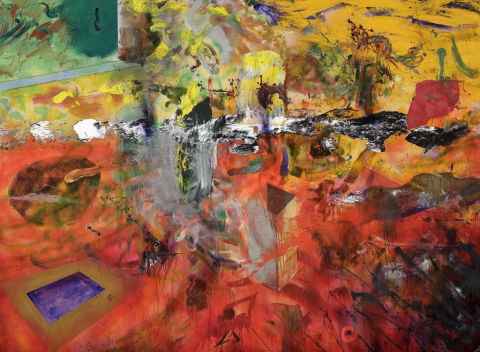

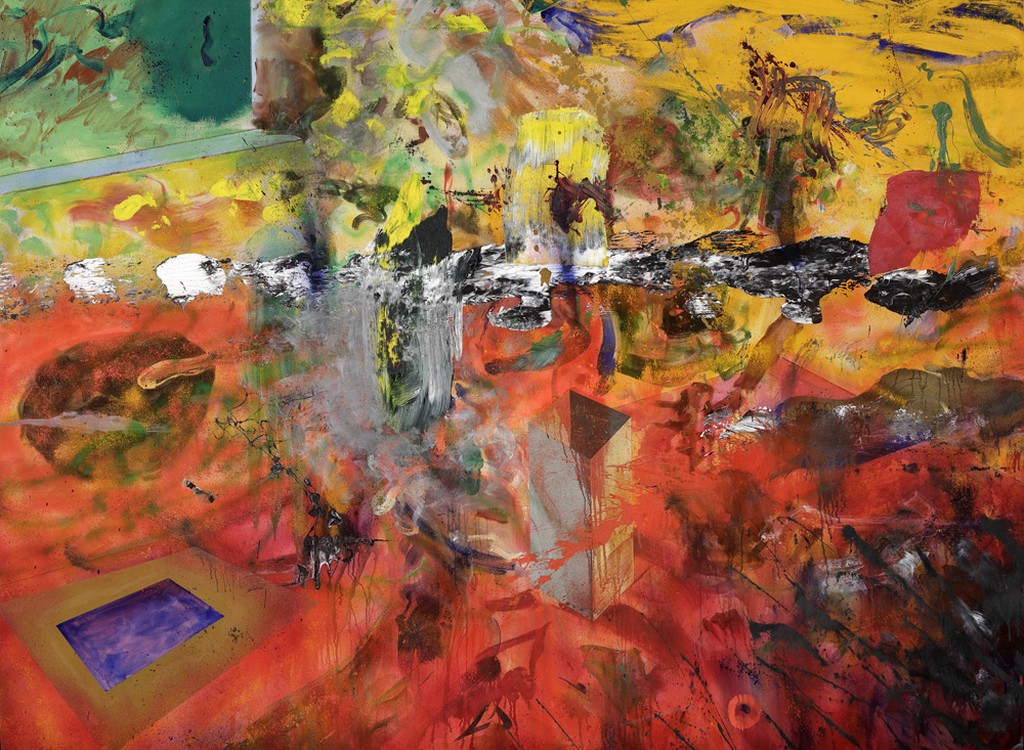
Jack Whitten was an African American artist who was born in Bessemer, Alabama in 1939. Whitten began his studies at Tuskegee Institute in medicine to become an army doctor, but left to pursue a degree in art after becoming inspired by George Washington Carver’s legacy as a scientist, inventor and artist. While studying at Southern University in Baton Rouge, Louisiana Whitten began participating in civil rights demonstrations. He also traveled to nearby Montgomery, Alabama to hear Martin Luther King, Jr. speak during the Montgomery Bus Boycott and was deeply moved by his vision for a changed America. Angered by the violent resistance to change there, Whitten moved to New York City in 1960. He enrolled in The Cooper Union for the Advancement of Science and Art in 1960 and earned his bachelor of fine arts degree in 1964. Afterwards he remained in New York as a working artist, strongly influenced by the Abstract Expressionists then dominating the art community. He was also deeply influenced by the Jazz music of John Coltrane as well as the paintings of Jacob Lawrence.
Whitten’s work reflects on his experiences during the Civil Rights Movement, the Vietnam War, and the political turmoil of the 60s. He was known as a painter and sculptor, and for his rigorous experimentation with the materiality and techniques of painting. Largely working without much public attention over the following decades, in 2014 the travelling retrospective “Jack Whitten: Five Decades of Painting” opened at the Museum of Contemporary Art in San Diego to critical acclaim. The artist died on January 20, 2018 in Queens, NY. Today, his works are held in the collections of the Art Institute of Chicago, The Museum of Modern Art in New York, and the Cleveland Museum of Art, among others. Former President Barack Obama awarded Jack Whitten the 2015 National Medal of Arts.
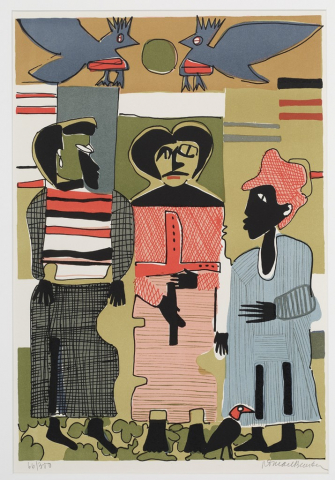

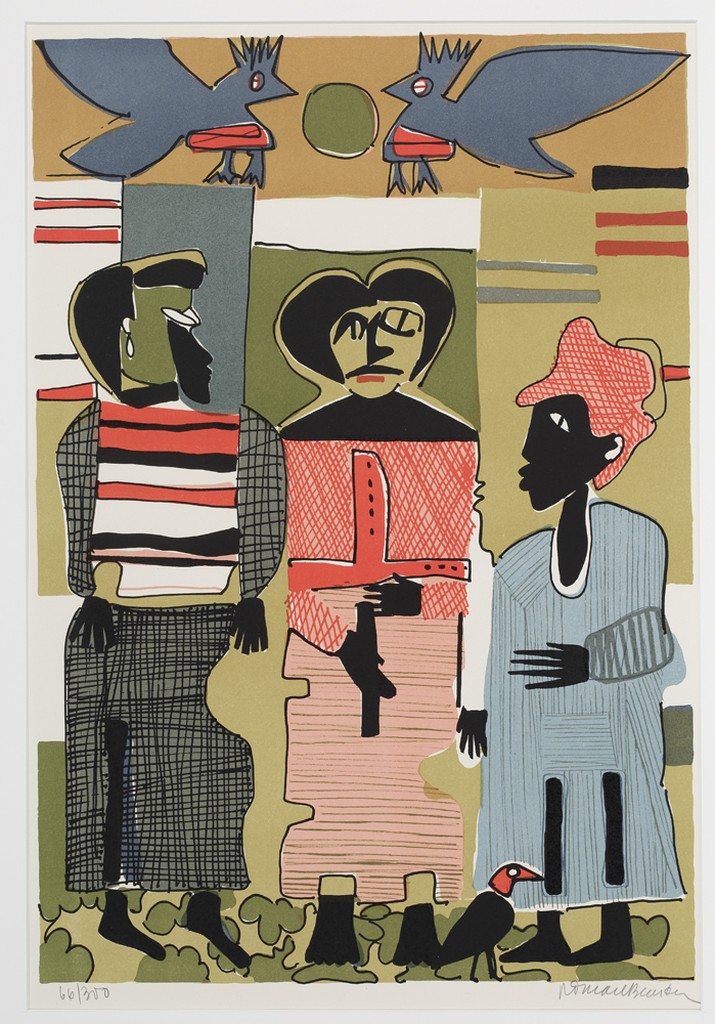
Romare Bearden was raised among the cultural artists and musicians of the Harlem Renaissance in New York City, meeting and befriending important figures including W.E.B. DuBois, Langston Hughes and Duke Ellington. Bearden also lived and studied in Paris, soaking up influences by mid-century European modernist masters. He eventually returned to America, gradually synthesizing his various aesthetic and cultural experiences to create his own personal artistic language articulating aspects of his African-American heritage.
In Bearden’s arresting color lithograph Firebirds, the artist makes optimal use of the printing process to cut into large flat areas with areas of contrasting bands of color, evoking collages of traditional African cloth and patterns. Three figures face each other, wearing distinctly patterned clothing. The middle figure holds a perforated object that resembles a cross, or perhaps a musical instrument with holes for keys. The small red bird and crowned birds at the top of the image may represent the Firebirds of the title; mythical creatures who immolated themselves by fire and were resurrected afterwards to new life. Bearden’s three figures in Firebirds could evoke a reference to Picasso’s Three Musicians; the iconic figurative imagery suggesting an artistic legacy risen from the ashes of postwar Europe, transformed and reinterpreted with a New World cultural commentary and perspective.
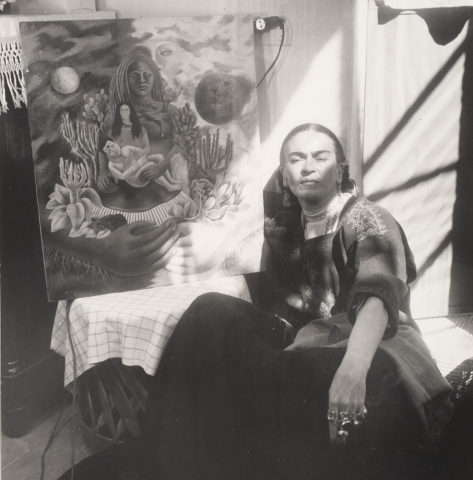

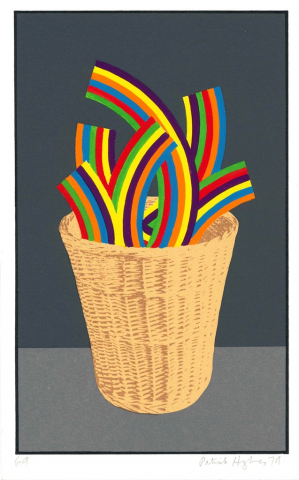

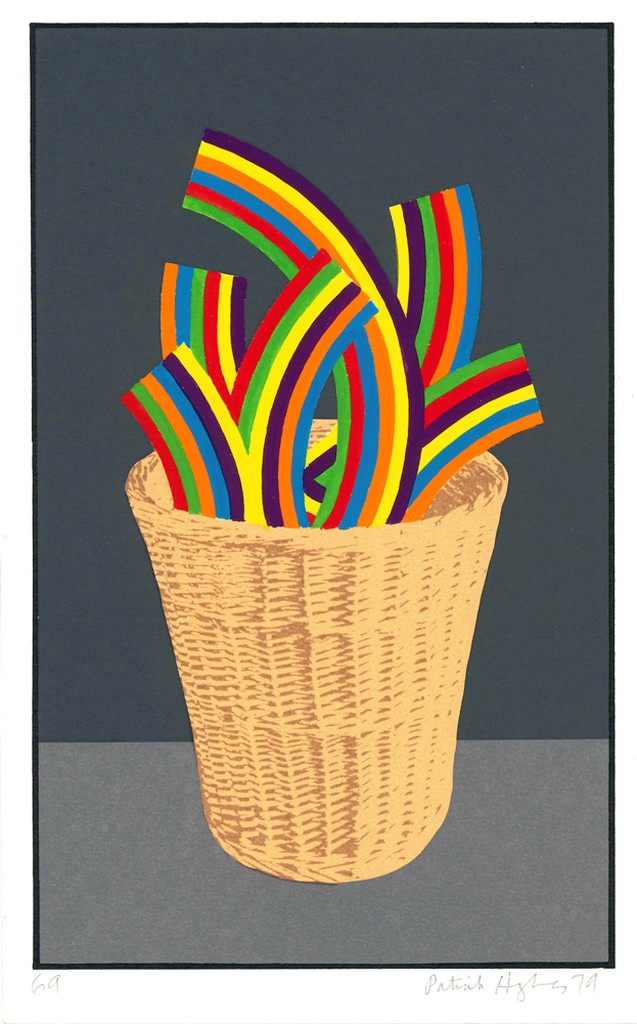
Patrick Hughes is an English artist who was born in Birmingham, England in 1939. He was educated at the James Graham Day college in Leeds in the 1950s. He then taught at the Leeds College of Art.
Patrick Hughes is a British artist known for his invention of a unique optical illusion he calls the “reverspective.” In these three-dimensional relief paintings, objects appear to move as the viewer moves past, where objects that appear closest to the viewer, are in fact, the furthest away in physical space. Playing with perspective and distance and challenging the viewer’s understanding of vision. “When the principles of perspective are reversed and solidified into sculpted paintings, something extraordinary happens,” the artist has said of his work. “The mind is deceived into believing the impossible, that a static painting can move of its own accord.” Born Peter David Hughes on October 20, 1939 in Birmingham, United Kingdom, the painter created Sticking-out Room—his first reverspective—in 1964 after studying at the Leeds Day Training College. On the day of his graduation, he had his first exhibition at the Portal Gallery in London. Currently living and working in London, United Kingdom, Hughes’s works are held in the collections of the Tate Gallery and the Victoria and Albert Museum in London.
Patrick Hughes is an English artist who was born in Birmingham, England in 1939. He was educated at the James Graham Day college in Leeds in the 1950s. He then taught at the Leeds College of Art. (ArtNet)
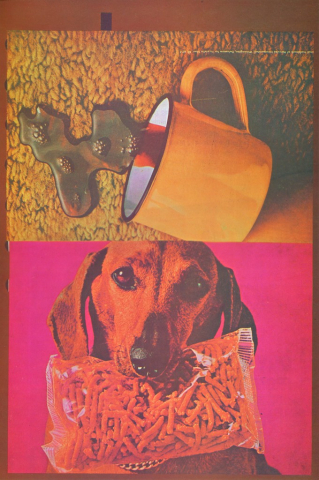

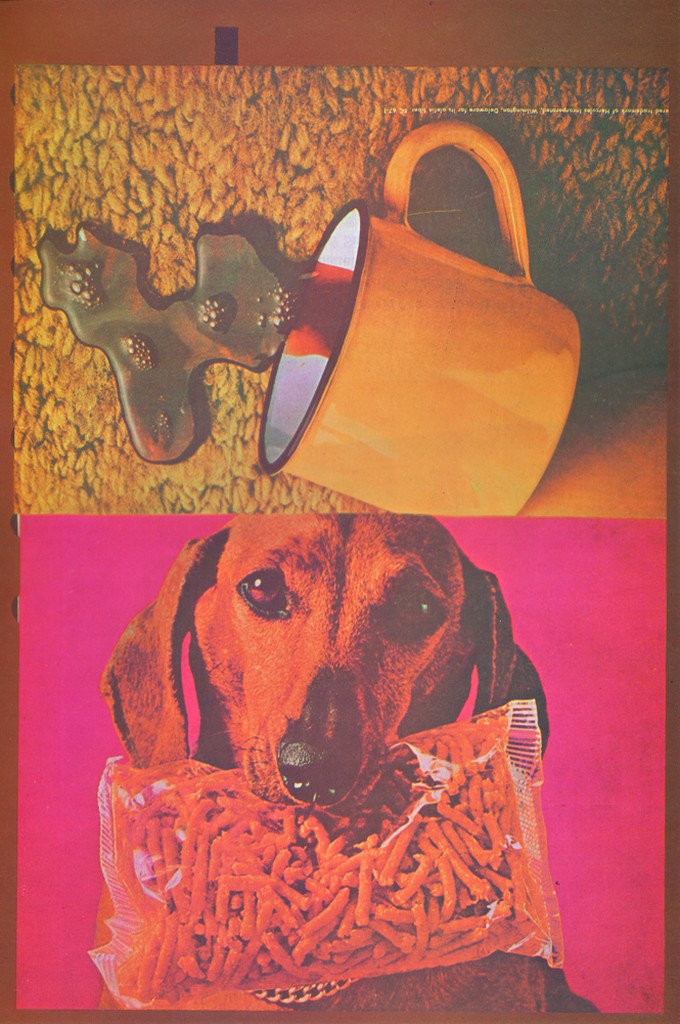
Sir Eduardo Luigi Paolozzi, helped launch the British Pop Art movement with a series of collages based on mass-media images and later became one of England’s leading sculptors. When Paolozzi was a child his family owned an ice cream parlor where he enjoyed collecting cigarette packet cards, which usually featured Hollywood stars or military vehicles such as airplanes, prompting a life-long fascination with American culture and the relationship between people and machinery.
Paolozzi studied art in Edinburgh and London, and in 1947 he moved to Paris, where he became immersed in Surrealism and Dada. During this time he began to craft his landmark collages, in which he juxtaposed magazine photographs, advertisements, and scientific illustrations. Returning to London in 1949, he became a member of the Independent Group, an association of artists who challenged the Modernism art movement at that time, in order to make it more inclusive of popular culture. At one of the group’s meetings in 1952, he featured the collages in a slideshow for his lecture entitled “Bunk.” The event laid the foundations for the British Pop art movement. In the early 1960s Paolozzi began to craft colourful robot-like sculptures that expressed his interest in machinery and science. Among his numerous public commissions was a monumental sculpture of English physicist Sir Isaac Newton (1997) at the British LIbrary. Paolozzi also produced abstract screen prints—most notably the series As Is When (1965), inspired by the philosopher Ludwig Wittgenstein and considered a leading example of Pop art—and taught at a number of schools. He was knighted in 1989. He will particularly be remembered for the early collage works, which were important in inspiring the British pop art movement. This would eventually spur the International Pop art movement from which superstars like Andy Warhol, Roy Lichtenstein, Jasper Johns, and Robert Rauschenberg sprang.
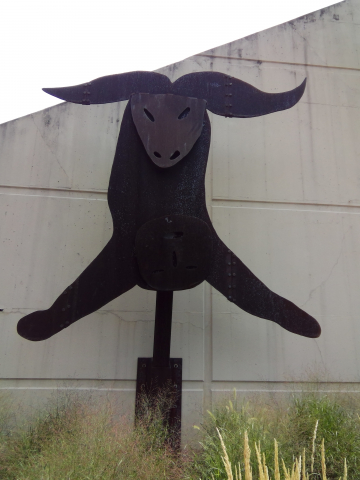


About Menashe Kadishman
(1932 – 2015) Israel
Menashe Kadishman was born in 1932 in Tel-Aviv, Israel. Kadishman studied under Sternsius there and Rudi Lehmann in Jerusalem. In London, He attended the St. Martin’s School of Art in 1959 and the Slade School of Art in 1960. Kadishman held solo exhibitions in 1965 at Grosvenor Gallery, in London and at Toronto’s Dunkelman Gallery in 1967. His group exhibitions include Ten Years of Sculpture in Israel in 1958, and Autumn Salon, 1966 at the Tel-Aviv Museum; and the International Sculptures Symposium in Montevideo, Uruguay in 1969. Kadishman’s awards include The American-Israel Cultural Foundation Scholarship in 1960, the Sainsbury Scholarship in 1961 and second prize for War of Independence Monument in Israel in 1962. He also won first prize in sculpture at the 5th Paris Biennale in 1967. Kadishman lived and worked in London from 1959 – 1972. Following his divorce from his wife in 1972, Kadishman moved back to Israel. In 1995, he was awarded the country’s highest honor, the Israel Prize.
Visit Menashe Kadishman’s official website: http://new.menashekadishman.com/
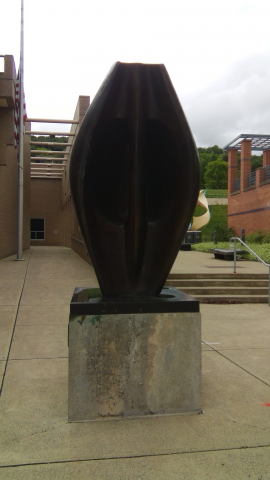

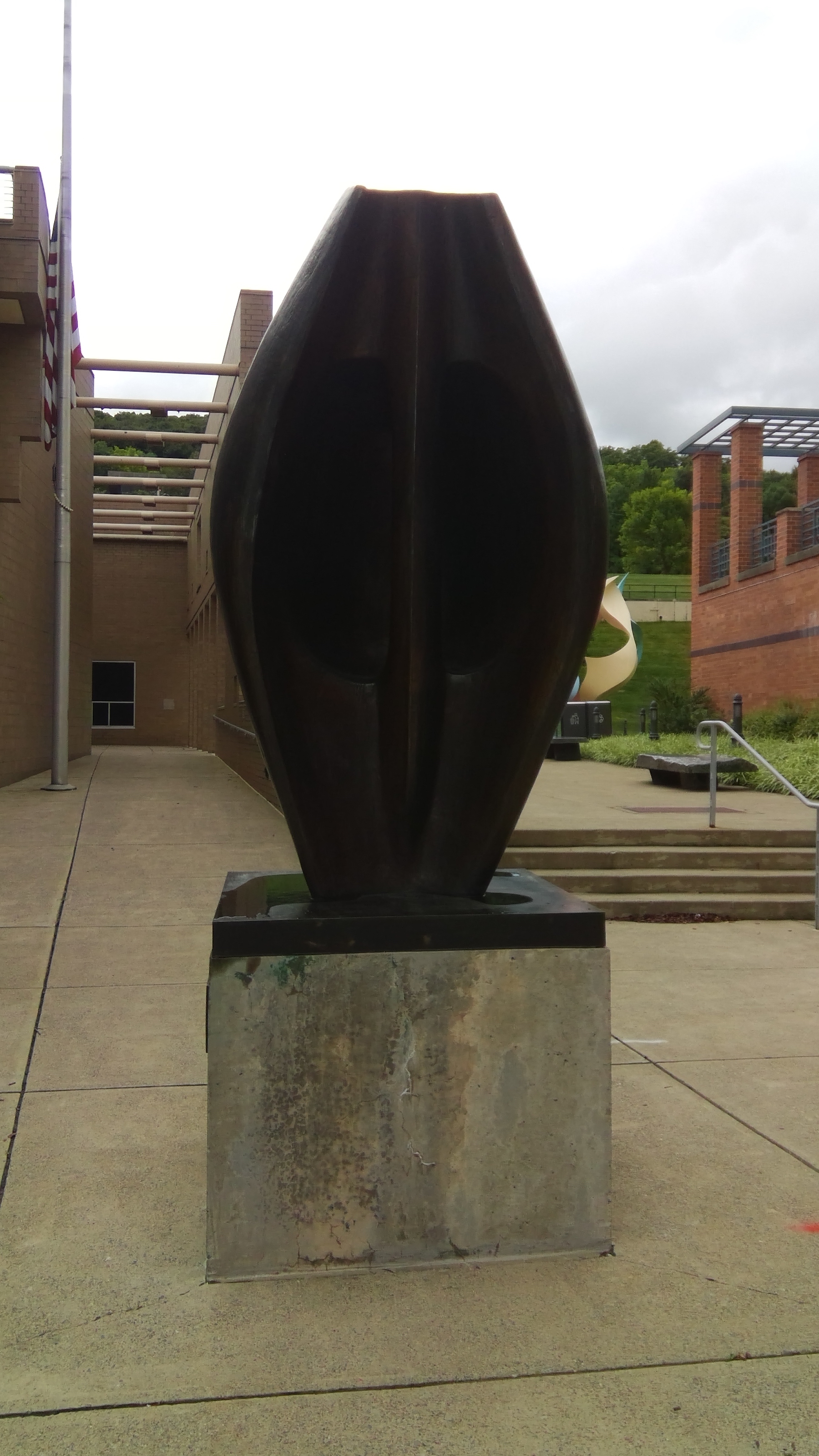
Large Totem Head is characteristic of sculptor Henry Moore’s work in that it evokes, without explicitly imitating, the world of natural, organic forms. The piece carries a range of associations to natural objects such as a hollowed-out walnut or a human face. Its title and form further suggest the influence of primitive art, whose intense vitality and elemental power Moore admired. In the richness and complexity of its many associations and meanings, Large Totem Head demonstrates Moore’s goals for his art: “Sculpture should always have at first some obscurities and further meanings. People should want to go on looking and thinking; it should never tell all about itself immediately. In fact, all art should have some more mystery and meaning to it than is apparent to a quick observer.”
About Henry Moore
(1898 - 1986), England
Henry Moore was born in July 1898 in Castleford, West Yorkshire, England as the seventh of eight children. As a youth, he held an interest in medieval sculpture and began sculpting in clay and carving wood. After serving in World War I, Moore used his ex-serviceman’s grant to become the first student of sculpture at the Leeds College of Art and Design. He then won a scholarship to study at the Royal College of Art in London, where he extended his knowledge of primitive art and sculpture, studying the ethnographic collections at the Victoria and Albert Museum and the British Museum.
Moore is best known for his abstract monumental bronze sculptures, located around the world as public works of art. His forms are usually abstractions of the human figure, typically depicting mother-and-child or reclining figures. Though highly stylized, Moore’s works often suggest the female body. He became well known for his larger-scale abstract cast bronze and carved marble sculptures, and was instrumental in introducing a particular form of modernism to the United Kingdom. In 1932, Moore took up a post as the Head of the Department of Sculpture at the Chelsea School of Art, and became a member of The Seven and Five Society. This group would develop steadily more abstract work, partly influenced by their frequent trips to Paris and contact with leading progressive artists, notably Pablo Picasso, George Braque, Jean Arp, and Alberto Giacometti. In 1946, Moore made his first visit to America when a retrospective exhibition of his work opened at the Museum of Modern Art in New York City. Later in 1948, Moore won the International Sculpture Prize at the Venice Biennale and was one of the featured artists of the Festival of Britain in 1951 and Documenta 1 in 1955.
The last three decades of Moore’s life continued in a similar way with several major retrospectives taking place around the world, notably a very prominent exhibition in the summer of 1972 on the grounds of the Forte di Belvedere overlooking Florence. By the end of the 1970s, there were about forty exhibitions a year featuring his work. Moore died in August 1986 in his home in Hertfordshire and was survived by his wife Irina and daughter Mary.
LUAG is in the process of continuously digitizing its collection. Thousands of works are now available online. To leave the current website and search LUAG's collection on JSTOR, use this field below.
*To search within Lehigh's collection only, make sure the "Search within collection" box is checked on the JSTOR landing page
Content Notice - Works of art encompass the full range of human experience. Visitors may encounter works that frankly or metaphorically depict the human body, pleasure, cultural power and oppression, joy, struggle, historical and ongoing biases, violence, death, and transcendence. Seeing these works may elicit strong emotional responses, and discretion is advised particularly where children are concerned. We seek to shine a light on the complex nature of these diverse works, to avoid self-censorship, and to encourage viewers to exercise a critical eye as they examine and participate in making meaning from them.
Search Lehigh University Art Galleries' collection of catalogs, brochures, and other publications through Lehigh University's digital collections repository.
